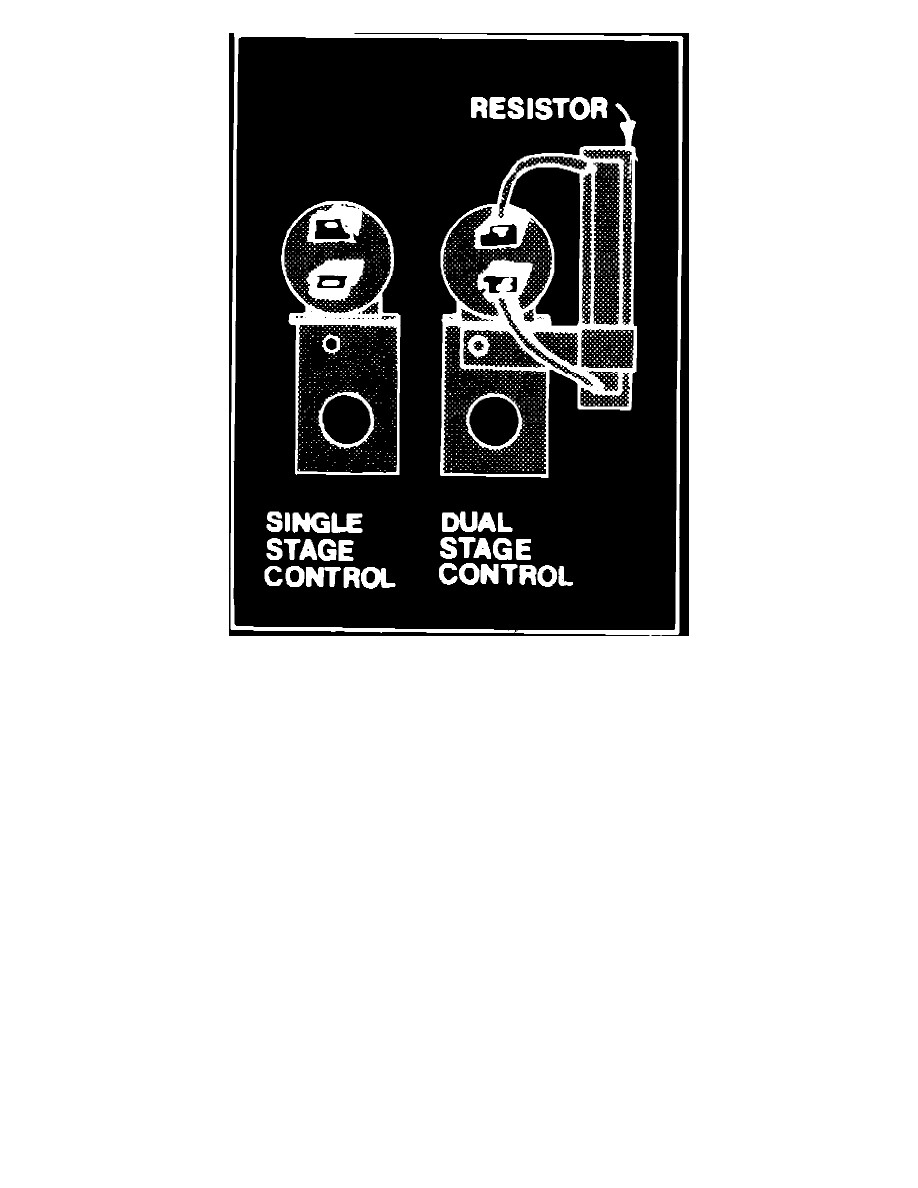PB 150 V8-318 5.2L VIN T 2-BBL (1983)

Fig. 34 Choke control switch. 6-225 & V8 engines less Rochester Quadrajet Carburetor
The electric assist choke, Fig. 32, is used to reduce carbon monoxide (CO) and hydrocarbon (HC) emission during engine starting and warm-up. The
choke thermostatic coil spring reacts to engine temperature, however, an electric heating element next to a bimetallic spring in the choke well will assist
engine heat to shorten choke duration, Fig. 33.
The wattage of the choke heater is part of the choke calibration and may change from year to year.
The single stage electric assist choke will provide a more rapid choke opening at temperatures above approximately 60° F., and a slower choke
opening below 60° F. A wire from the choke heater is connected to an electrical control switch, Fig. 34. An oil pressure switch is connected in series
with the control switch to prevent early choke opening. As oil pressure increases, the choke control receives current. At 60° F. and above, the
choke heater is energized by the control switch. Since the heater control switch is mounted on the engine, some cold weather operation may energize the
choke heater. This could happen after the choke has opened without benefit of electric heat. This condition will not have an adverse effect on engine
operation, and will soon be turned off.
The dual stage control switch shortens choke duration at temperatures above 80°F. and stabilizes choke duration during cold weather operation. Cold
weather heat levels are regulated by an electrical resistor connected to both terminals of the control. At temperatures below 55°F., electrical power to the
choke heating element is reduced by the resistor. At temperature above 80°F., the resistor is bypassed by a switch inside the control to supply full
electrical power to the choke heater unit. When the engine is started during cold weather conditions two levels of choke heat will be experienced, low
during engine warm-up and high after engine warm-up. High heat levels occur after the choke is open to ensure an open choke condition under all
driving conditions and minimize choking action which can occur after short stops during cold weather operation. Engines started in hot weather
conditions will not experience low choke heat levels, as the switch is normally warmer than 80°F.
The heating element should not be exposed to, or immersed in, any fluid for any reason. An electric short in the wiring to the heater or
within the heater will be a short in the ignition system.
V8 ENGINES WITH ROCHESTER CARBURETOR
